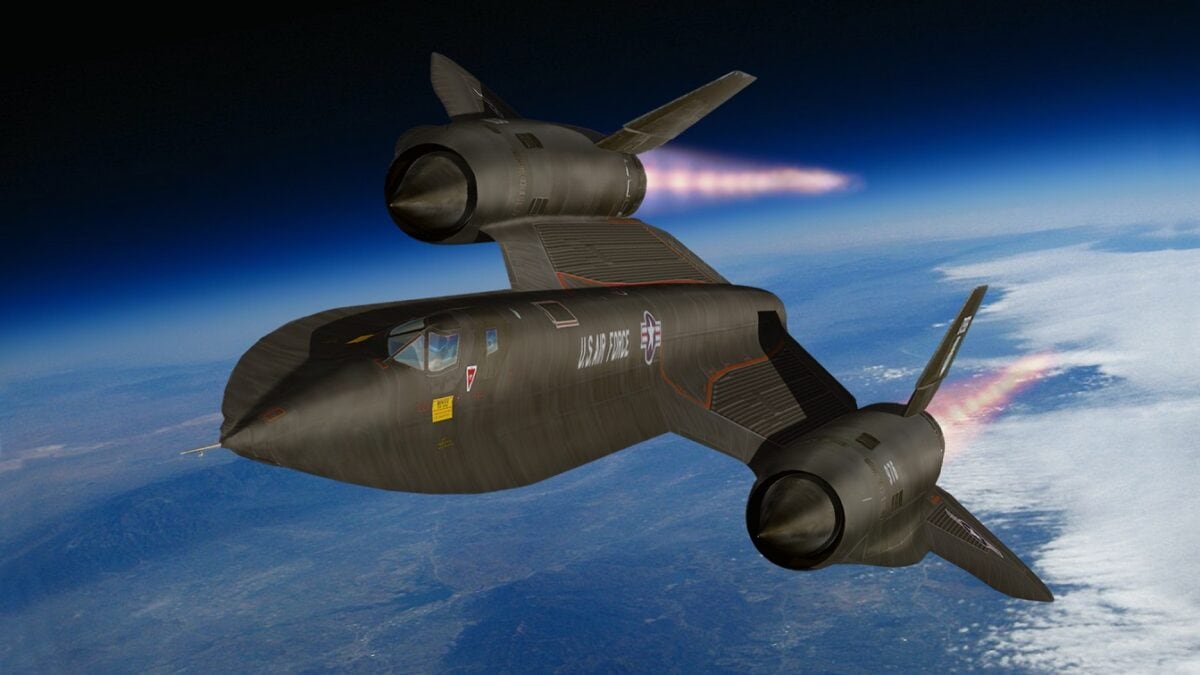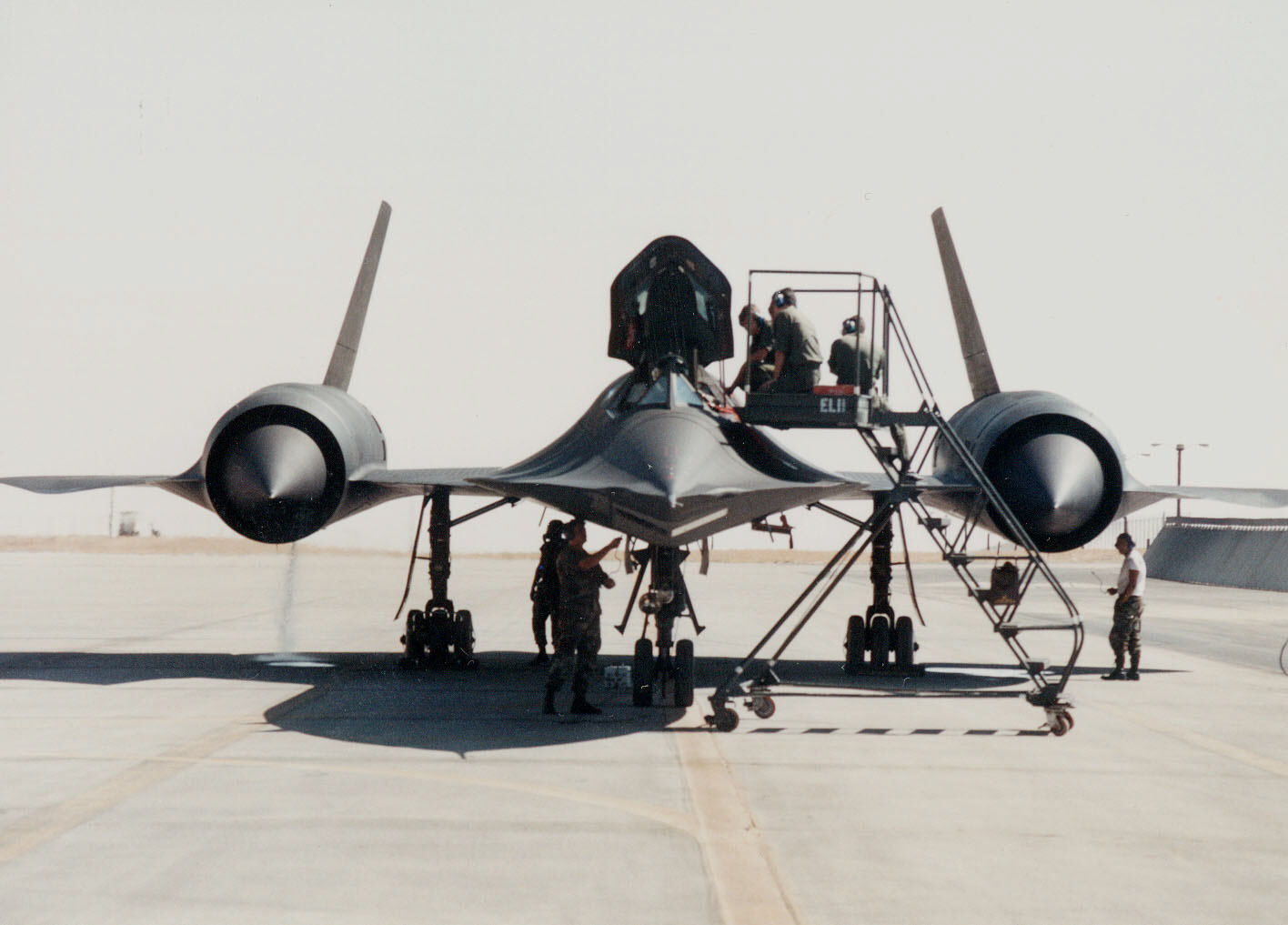Sr 71 Cost - Here's what you need to know: It was expensive to operate, and intelligence is easier to gather these days via satellite. But an advanced replacement drone is rumored to be in the works.
Capable of cruising at speeds above Mach 3.2, the Lockheed SR-71 Blackbird is the fastest manned aircraft ever operated. However, although its performance was never matched, the SR-71 was retired with the end of the Cold War.
Sr 71 Cost

The Blackbird was originally retired in 1990, before the fall of the Soviet Union. Eventually, however, the Air Force reactivated three jets - at the insistence of Congress - for a short period between 1995 and 1998. In the meantime, NASA conducted research missions with the aircraft until 1999. The Blackbird was eventually retired. Without a real replacement. but why?
Years Ago Today The Record Breaking Lockheed Sr 71 'blackbird' Made Its Final Flight
Ultimately, the SR-71 delivered unmatched performance, and operating costs doomed the Blackbird to early retirement. Also, the US Air Force had doubts about the aircraft's survivability against the new generation of Soviet (and later Russian) air defenses and interceptors such as the SA-10 Grumble (and other advanced S-300 derivatives) and MiG-31 Foxhounds. Indeed, the Air Force opposed congressional efforts to revive the program in the 1990s for the same reasons.
“The Air Force's decision to retire the Blackbirds in 1990 was based on several factors. In congressional testimony, Air Force Chief of Staff Gen. Larry D. Welch identified the increased presence of surveillance satellites, the SR-71's vulnerability to the Soviet SAM-5 surface-to-air missile and the cost of maintaining the SR-71 fleet. The cost factor is most important for the Air Force as it limits expenditure in other areas. Reagan administration Secretary of the Air Force Edward C. Aldridge Jr. estimated that the money used to operate the SR-71 fleet could operate and sustain two tactical attack wings.
In fact, by some accounts, the SR-71 cost as much as $200,000 an hour to operate when all the additional costs were factored in. Part of this cost came from the fact that it was a small specialized fleet. Because of the small number of jets built—thirty-two—and its unique design, the SR-71 was a maintenance hog. It also required a specialized transport train—specifically for its exotic fuel—costing $18,000 an hour in 1989 dollars.
The SR-71's JP-7 fuel—which the Blackbird had to carry on special KC-135Q tanks for refueling—is designed as a safe, high-flashpoint fuel that will not vaporize or explode under high heat and pressure. It had such low volatility that you could stick a match in a puddle of JP-7. But that meant it was difficult to burn the fuel using compromise systems, which meant Lockheed had to develop a triethylborane-based chemical ignition system for the SR-71 engines – adding to the jet's complexity and maintenance costs.
Lockheed Sr 71 \
As the Air Force's budget declined toward the end of the Cold War, the service could not justify keeping the expensive SR-71 in its inventory—especially as new threats began to emerge. The service hoped to replace the venerable jet with a combination of satellites and other technologies.
One such system was the stealthy unmanned Lockheed Martin RQ-3 DarkStar surveillance drone, which was decommissioned in 1999. But the RQ-3 itself was cancelled, and the Air Force secretly continued to develop a Level 3 competitive aerial reconnaissance capability. Lockheed Martin RQ-170 Sentinel and Northrop Grumman RQ-180 unmanned aerial vehicle. An SR-71B trainer over the Sierra Nevada mountains in California in 1994. The second cockpit is for the instructor.
The Lockheed SR-71 "Blackbird" is a long-range, high-altitude, Mach 3+ strategic reconnaissance aircraft developed and manufactured by the American aerospace company Lockheed Corporation.

The SR-71 was developed by Lockheed's Skunk Works division in the 1960s as a project black from the Lockheed A-12 reconnaissance aircraft. American astronaut Klaus "Kelly" Johnson was responsible for many of the aircraft's innovative concepts. The shape of the SR-71 was based on the A-12 and was one of the first aircraft designed with a reduced radar cross section. Originally, a bomber variant of the A-12 was requested by Curtis LeMay, before the program focused exclusively on reconnaissance. Operational equipment for the reconnaissance role included signals intelligence, side-facing airborne radar and a camera;
Nasa Armstrong Fact Sheet: Sr 71 Blackbird
The SR-71 was longer and heavier than the A-12, allowing it to hold more fuel and a two-seat cockpit. The SR-71 entered service in January 1966.
In aerial reconnaissance missions, the SR-71 operated at high speeds and altitudes (Mach 3.2 and 85,000 feet, 25,900 meters), allowing it to outrun threats or become fatigued.
If a surface-to-air missile launch was detected, the standard evasive action was to accelerate and run away from the missile.
Typically, each SR-71 can be flown once a week due to the long turnaround required after mission recovery. A total of 32 aircraft were built; 12 people were lost in accidents, and none were lost in action.
Incredible Shot Of Sr 71 Blackbirds Together
In 1989, the USAF retired the SR-71, mainly for political reasons; Several were briefly reactivated in the 1990s before their second retirement in 1998. The last operator of the Blackbird was NASA, which used it as a research platform and was retired in 1999.
Since retirement, the SR-71's role has been fulfilled by a combination of reconnaissance satellites and unmanned aerial vehicles (UAVs); A proposed UAV successor, the SR-72, is being developed by Lockheed Martin and is scheduled to fly in 2025.
The SR-71 holds the world record set in 1976 for the fastest air-breathing manned aircraft, previously held by the Lockheed YF-12.

Lockheed's previous spy plane was the relatively slow U-2 designed for the Central Intelligence Agency (CIA). In late 1957, the CIA approached defense contractor Lockheed to build an undetectable spy plane. The project, called Archangel, was led by Kelly Johnson, head of Lockheed's Skunk Works unit in Burbank, California. Work on Project Archangel began in the second quarter of 1958 with the goal of flying higher and faster than the U-2. Of the 11 series designs prepared over a 10-month period, the "A-10" was at the forefront. However, its shape made it vulnerable to radar detection. After a meeting with the CIA in March 1959, the design was modified to reduce the radar cross section by 90%. On February 11, 1960, the CIA approved a US$96 million contract for Skunk Works to build doz spy plane called the "A-12". Aircraft like the A-12.
The Sr 71 Blackbird Cost $200,000 An Hour To Fly
The A-12 first flew on 25 April 1962 at Groom Lake (Area 51, Nevada). Two variants were also developed, including three YF-12 interceptor prototypes and two M-21 drone carriers. The aircraft was intended to be powered by a Pratt & Whitney J58 engine, but development was delayed, and instead was initially fitted with the less powerful Pratt & Whitney J75. J58s were retrofitted when available, becoming the standard JIN for all later aircraft in the series (A-12, YF-12, M-21) as well as the SR-71. The A-12 flew missions over Vietnam and North Korea before being retired in 1968. The cancellation of the program was announced on 28 December 1966.
The SR-71 designation is a continuation of the pre-1962 bomber series; The last aircraft produced using the series was the XB-70 Valkyrie. However, a bomber variant of the Blackbird was briefly given the B-71 designation, and was retained when it was changed to the SR-71.
In the later stages of testing, the B-70 was proposed for a reconnaissance/strike role with the designation "RS-70". Apparently finding the A-12's performance too good, the USAF ordered a variant of the A-12 in December 1962.
This USAF version was longer and heavier than the original A-12 because it had a longer fuselage to hold more fuel. The R-12 also had a larger two-seat cockpit and a redesigned fuselage. The surveillance equipment included signals intelligence units, side-facing airborne radar and a photographic camera.
Sr 71 Blackbird Habu Us Airforce Aircraft Spy Plane Blueprint Plan Artwork Framed A3 Wall Art Print
The CIA's A-12 was a better photoreconnaissance platform than the USAF's R-12 because the A-12 flew slightly higher and faster.
During the 1964 campaign, Republican presidential candidate Barry Goldwater criticized President Lyndon B. Goldwater for falling behind the Soviet Union in developing new weapons. Johnson and his administration were repeatedly criticized. Johnson decided to counter this criticism by revealing the existence of the YF-12A USAF interceptor, which still served as cover for the stealthy A-12.
And USAF reconnaissance model from July 1964. USAF Chief of Staff Gerald Curtis preferred the designation SR (Strategic Reconnaissance) and wanted the RS-71 to be designated SR-71. Before the July speech, LeMay lobbied to change Johnson's speech to read "SR-71" instead of "RS-71." The press release issued to the press at the time still had the former RS-71 designation in place, creating the story that the president had misread the aircraft's designation.
To hide the existence of the A-12, Johnson only referred to the A-11, revealing the existence of a high-speed, high-altitude reconnaissance aircraft.
Why The Air Force Gave Up On The Sr 71 (the Fastest Plane Ever)
Secretary in 1968
Sr 71 blackbird cost, sr 71 blackbird toy, sr 71, sr 71 model rocket, sr-71 cost, how much does a sr 71 cost, lockheed sr 71 blackbird cost, sr 71 shirt, sr 71 toy, lego sr 71 blackbird, sr-71, sr 71 blackbird cost to build


0 Comments